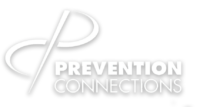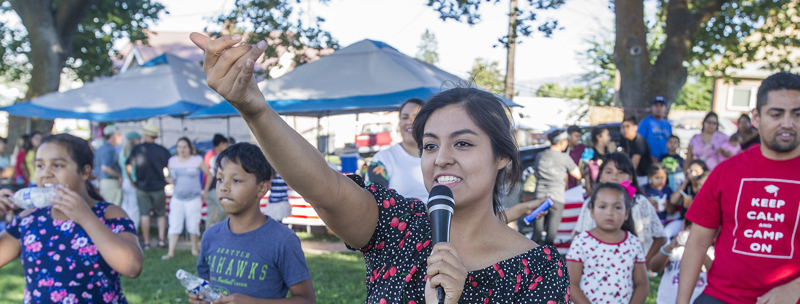High-Quality, Beautiful Parks Makes for a Healthier Virginia
January 24, 2020
In this blog, Geneva Vest, Program Coordinator of Creative Placemaking for The Trust for Public Land, shares how health officials an marry the benefits that arts and parks to promote community health. According to Geneva, “What starts as a park renovation can become a social movement…There are invaluable voices in your community that can shape not just how many parks are accessible, but symbolize your community identity as resilient, creative, and healthy.”
Think about the last time you went to a park. What did you do? What did you see? How did you feel on your way home? You probably did some walking or exercise, saw faces both familiar and new, and left feeling better in mind and body.
The Action Plan for a Healthy Virginia encourages Virginians to engage in regular physical activity. Parks can be a great location to support this goal, as well as multiple other health benefits. Whether it be improved mental health; reduced social isolation and exclusion, chronic disease, and obesity; or indirect benefits of reduced heat islands and stormwater runoff (Gies 2006), parks are an invaluable community asset.
At the Trust for Public Land (TPL), we believe that everyone deserves a park because of the individual and community benefits described above. Similarly, we believe that health, as the World Health Organization says, is a human right. And yet, like health, quality parks are not equitably distributed in America.
Across the U.S., over 100 million residents don’t have a park within a 10 minute walk. TPL, in partnership with NRPA and ULI, leads the 10 Minute Walk Campaign to get America’s mayors to commit to providing high-quality parks to all their residents. Four cities in Virginia—Alexandria, Fairfax, Richmond, and Roanoke—have signed onto the campaign.
Just living close to a park is shown to reduce childhood obesity (Wolch 2011). To create a healthier Virginia its critical that other local communities commit to increasing access to parks.
But having access to a park is only the beginning. The quality of parks matters too.
At TPL and in organizations across the country, parks leaders are constantly seeking ways to ensure parks are an asset to the community. Arts and culture can play a critical role in achieving this goal. Whether it is using arts to communicate the needs of residents for a new park or hosting a free performance celebrating identity and diversity in a decades-old park, arts and culture is a valuable tool that everyone—even if you don’t consider yourself an artist—can identify with.
Creative Parks, Healthy Communities (CPHC), is an initiative of TPL and the National Association of County and City Health Officials (NACCHO), to help health officials marry the benefits that arts and parks have on community health. The benefits of place-based arts and culture are many and, you may notice, similar to parks. They redress collective trauma, improve social isolation and exclusion, address mental health, and reduce certain chronic diseases (Sonke et. al. 2019). Greater than the sum of their parts, though, arts and culture in parks and public space have the combined power to sustain community capacity, social cohesion, and equitable community development.
What does this all look like in action?
Take one example in Wenatchee, WA: Kiwanis-Methow Park. The community surrounding this small and, until recently, blighted park is predominantly Latino immigrants who, based on a health impact analysis, were disproportionately experiencing mental health issues, lower civic participation, and social isolation. Despite these challenges, spend a day in Wenatchee and you’re left feeling inspired. There’s a sturdy and vibrant cultural tissue connecting the Latino community that surrounds Kiwanis-Methow Park. Mariachi groups, papel picado artists, and the best Mexcian food in the state are all here and serve to promote regular contact with community members.
Given this abundance of arts and culture in Wenatchee, TPL partnered with artists and community organizers to engage community in ways that were familiar and could establish trust between stakeholders, such as holding meetings at Mariachi Festivals and hosting a “Health Wenatchee” festival where community members could visit the park and receive free health resources, meanwhile providing rich and honest input on the park project.
Through years of extensive engagement, the results are remarkable and the park beautiful. There are 4,700 residents who live within a 10 minute walk of a high quality park. Wenatchee residents fought hard to fund a kiosko, or pavilion, in the heart of Kiwanis-Methow Park. “The kiosko will be a place where the community gathers, a central point for our pachangas (parties),” says Teresa Bendito, a young parks advocate who co-founded the grassroots organization Parque Padrinos.
This capacity building around the park has supported advocacy in other dimensions of community life. In 2018, The Trust for Public Land and Parque Padrinos partnered with the Latino Community Fund of Washington (LCF) to increase voter turnout in South Wenatchee. With training and stipends from LCF, Padrinos knocked on 3,500 doors and made 4,200 phone calls to Latino voters in Wenatchee. When the ballots were tallied, Latino voter turnout increased from 10 to 30 percent. Compared to the last two midterm elections, voting by Latinos under the age of 35 increased by more than 200 percent!
As illustrated in the Kiwanis-Methow Park example, what starts as a park renovation can become a social movement. When the process of creating public art engages people in the neighborhood in a sensitive and genuine manner, it can be profoundly transformative and improve the health of a community.
At TPL, we believe the most empowering public art comes from envisioning by the community itself. There are invaluable voices in your community that can shape not just how many parks are accessible, but symbolize your community identity as resilient, creative, and healthy. So the next time you are thinking about how to promote physical activity in your community, consider how you might create better parks; parks that inspire and engage.
You can learn more about your municipalities parks on ParkServe. Have more questions? Perhaps they are answered on Parkology? Reach out to geneva.vest@tpl.org for more.
Geneva Vest
Program Coordinator of Creative Placemaking
The Trust for Public Land
Works Cited
Gies, Erica. (2006). The Health Benefits of Parks. The Trust for Public Land.
Sonke, J., Golden, T., Francois, S., Hand, J., Chandra, A., Clemmons, L., Fakunle, D., Jackson, M.R., Magsamen, S., Rubin, V., Sams, K., Springs, S. (2019). Creating Healthy Communities through Cross-Sector Collaboration [White paper]. University of Florida Center for Arts in Medicine / ArtPlace America
Wolch, J., Jerrett, M., Reynolds, K., Mcconnell, R., Chang, R., Dahmann, N., … Berhane, K. (2011). Childhood obesity and proximity to urban parks and recreational resources: A longitudinal cohort study. Health & Place, 17(1), 207–214. doi: 10.1016/j.healthplace.2010.10.001

